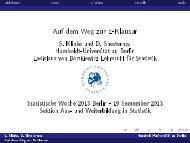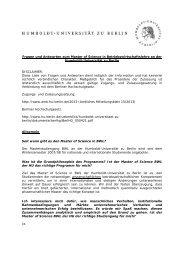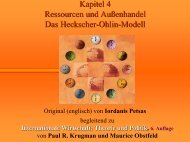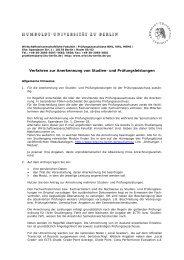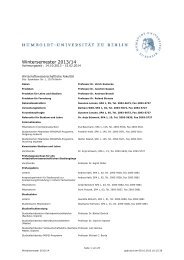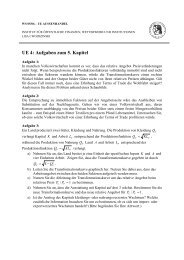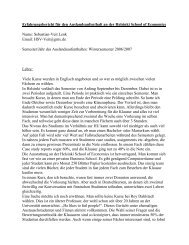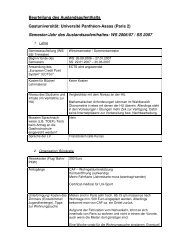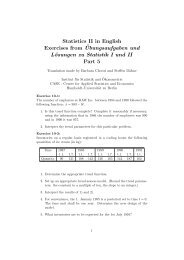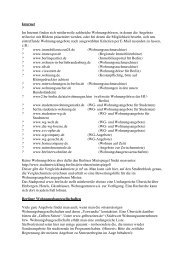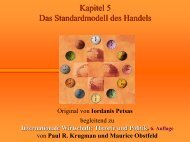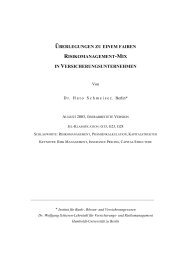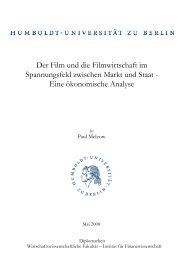Master Thesis - Humboldt-Universität zu Berlin
Master Thesis - Humboldt-Universität zu Berlin
Master Thesis - Humboldt-Universität zu Berlin
You also want an ePaper? Increase the reach of your titles
YUMPU automatically turns print PDFs into web optimized ePapers that Google loves.
with RP positive. The risk premium is a function decreasing in net foreign<br />
assets, which means that that foreign interest rate faced by the households<br />
is increased by a premium when the domestic economy is a net borrower and<br />
reduced by a discount when it is a net lender. The risk premium has a second<br />
component, a mean-zero disturbance ɛ S t , which serves as an uncovered rate<br />
parity shock, as in our model, with the same sign in the linearized form as<br />
the rate of return on foreign bonds.<br />
Firstly, the graphs produced in Dynare and that displayed in the models used<br />
for comparison are the same, proving the authors right when they change<br />
the sign of the shock when modelling the impulse-response analysis. Second,<br />
between the theoretical benchmark models and De Walque et al.(2005) there<br />
is consistency when placing the risk premium.<br />
Because the evidence is ambiguous, we chose to represent the model to match<br />
the Dynare codes and our intuition, and assume that the positioning of the<br />
stochastic term is probably related to the expectation formation or modeling<br />
the current account:<br />
ˆR t − ˆR ∗ t + ˆɛ S t = Ŝt − Ŝt+1 (36)<br />
The equation shows that a higher interest rate home implies a lower expected<br />
forward rate which corresponds to an appreciation of domestic currency in<br />
terms of the foreign coin.<br />
To derive consumption we write Euler equation as follows:<br />
E t<br />
[<br />
β U c t+1<br />
U c t<br />
1 + τt<br />
c<br />
1 + τt+1<br />
c<br />
]<br />
RtP e t<br />
C<br />
= 1 (37)<br />
Pt+1<br />
C<br />
In the log-linearized version taxes are expressed as deviations from the steady<br />
state value and rescaled by multiplying in every case respectivelly with 1−τ c ,<br />
1 − τ l , 1 + τ c .<br />
21



